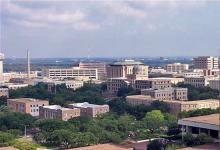Brazos Valley Healthcare High-Speed Plans Take Shape
Plans for a fiber-optic middle mile network to serve the Brazos Valley in Texas are firming up and the project should be up and running within two years, reports KBTX from Bryan and College Station. The network will also have a fixed wireless complement.
Healthcare First
The $22 million network backbone, funded through the FCC’s Healthcare Connect Fund and the Brazos Valley Council of Governments (BVCOG), will first connect healthcare providers such as hospitals, schools nurses, and jail clinics.
According to the April 2015 Network Plan from the Brazos Valley Council of Governments, 62 percent of the population in the proposed service area live in rural areas with poor access to quality healthcare. Twenty percent of residents in the region are 60 years of age or older. Texas A&M School of Public Health, one of the partners in the project, completed a study that indicated high percentages of chronic conditions in residents in the region. In 8 of 12 of those measures, the results were worse than the national average. In some cases, the rates were twice as high as national averages.
Local leaders plan to next add libraries, workforce centers, schools, and a number of other local government facilities. "If our schools are spending a disproportionate amount of their funds on just providing the minimum of internet, that's not right. We can fix that," said Michael Parks, Executive Director of the Brazos Valley Council of Governments.Jobs Ahead



